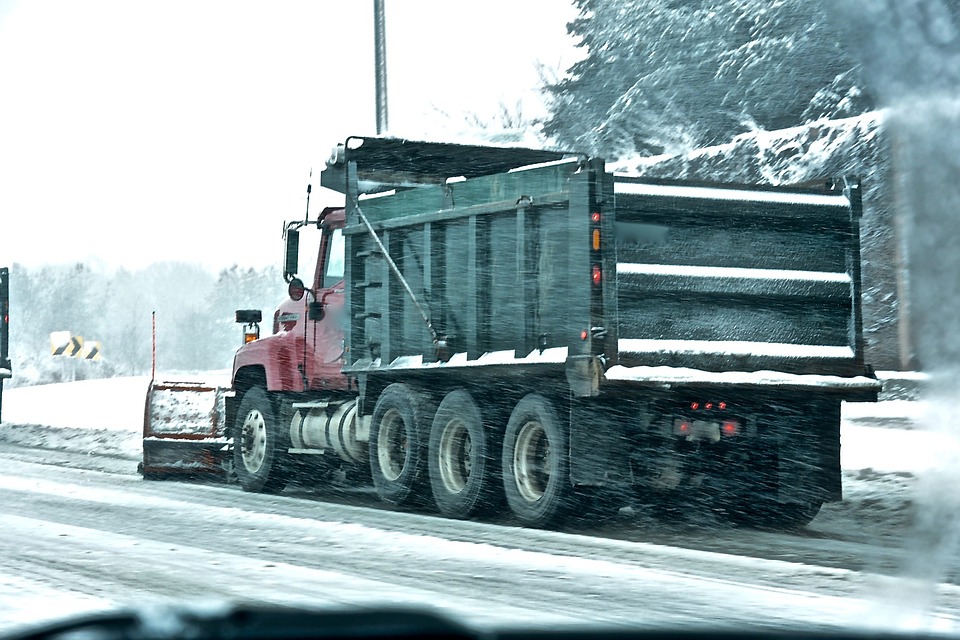Need help? We're here!
(888) 312-8812 Login SignupWinter Driving Challenges Faced by Truck Drivers and How to Deal with Them
January 11, 2021

Image Source: Pixabay
Winter driving is no easy feat. While dealing with the cold, truckers also need to be extra mindful of all the driving challenges and dangerous situations brought about by snow and the icy weather in general.
According to the U.S. Department of Transportation Federal Highway Administration (FHWA), every year, 24 percent of weather-related road accidents happen on snowy or icy roads and 15 percent occur during snowfall or sleet. Over 1,300 fatalities are reported annually and more than 116,800 are injured in vehicle collisions on snowy, slushy, or icy pavement.
To avoid getting involved in any road mishap in the winter, you need to arm yourself with enough know-how and skills in facing the challenges brought by the snowy season. Here are some of the conditions you need to prepare yourself for:
Icy roads
Among the most challenging problems truckers need to face during winter are icy roads. These include navigating over and making accurate turns over slippery inclines and declines. While installing winter tires and maintaining your big rig can improve your truck’s performance on snowy pavements, your driving habits also make a huge difference. During winter, always drive slow and be ready for what lies ahead. Assume that there will be bridges covered with ice, so you will not panic when you reach one.
Stay alert for black ice as it is one of the worst and most dangerous problems truckers must deal with in winter. This is thin, super slick, and is almost invisible on the roads. Many car and truck drivers have gotten into road mishaps by turning into intersections that were unnoticeably covered with black ice. For truckers, black ice causes jackknifing and spinning out of control. This happens if the trucker suddenly brakes when making turns. Stay safe by driving slowly and hitting the brakes only when you are on a straight pavement.
Poor visibility
Visibility in areas with heavy snowfall is another factor truckers should prepare for during winter. Some truckers have reported encountering close calls while driving off the road with low visibility. This is often caused by high-speed winds that take snow with them, affecting the trucker’s view of the road ahead. Some drivers share that when low visibility leaves them disoriented, they decide to stop on the roadside or call it a day. This is what you should do, as well. Remember that no delivery is worth your life.
Passing snowplows
The Department of Transportation advises truck drivers not to pass snowplows as this can be dangerous. A snowplow kicks up snow, and this can affect your visibility as you pass by it. It is also a good idea not to tailgate snowplows. Leave a safe distance between them and your rig. They are applying sand and deicing or anti-icing chemicals on the slippery road to enhance traction and make it safer for you to apply your brakes. Hence, the safest driving surface in winter is behind the plow. If you desperately need to pass to meet your deadline, avoid passing on the right, into the spray of snow being plowed.
Lack of space at rest areas
Sometimes, a snowstorm or hazardous road conditions force most truckers to call it a day and seek refuge in rest areas. However, rest areas or truck stops in times like these are often full, so some truckers have no choice but to hit the road again and head to the next stop or any place they deem safe for them to let the dangerous condition pass.
Traffic clusters
While it is recommended to avoid driving surrounded by trucks and other vehicles, some drivers share that it is unavoidable because traffic tends to clump together naturally. What you should do in such a case is to go slowly and try to put as much distance between your truck and the vehicle you’re following.
Getting stuck due to deep snow
Finding a place to rest and let the harsh condition pass is a challenge. Pulling out of a snowy parking spot is another. If your trip is into a place with heavy snowfall, bring a sack of gravel or cat litter with you as this can be of big help should you get stuck on the roadside. It provides more traction that your wheels need to move forward and get unstuck. Otherwise, stay inside your truck and wait for help to arrive.
Frozen fuel filters
Truckers usually deal with clogged or frozen fuel filters during winter. As the outside temperature drops, diesel fuel can gel quickly and turn into sludge. What many truckers do when faced with such a problem is they leave their trucks idling for several hours and use the cabin heater to keep the fuel flowing and unclog the filter.
In some states, diesel fuel is treated with additives to avoid gelling. It also pays to always bring an extra fuel filter and plug-in heater that you can use to thaw the filter out.
Despite the fear, facing all of these winter driving challenges is part of a trucker's job. Once you're out there hitting the snowy roads, try your best to stay safe by pacing with other big rigs and asking for help from your fellow truckers when emergency problems arise.



